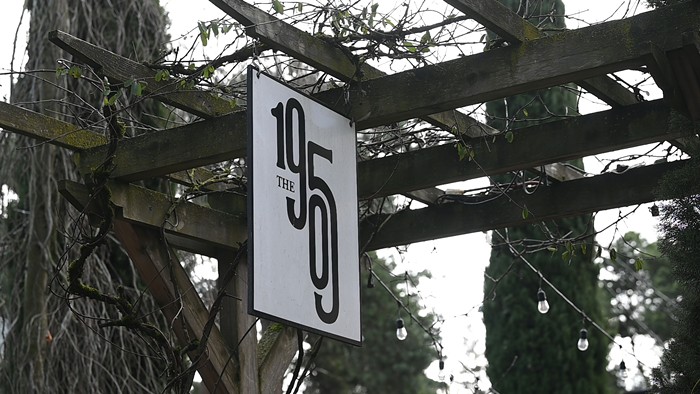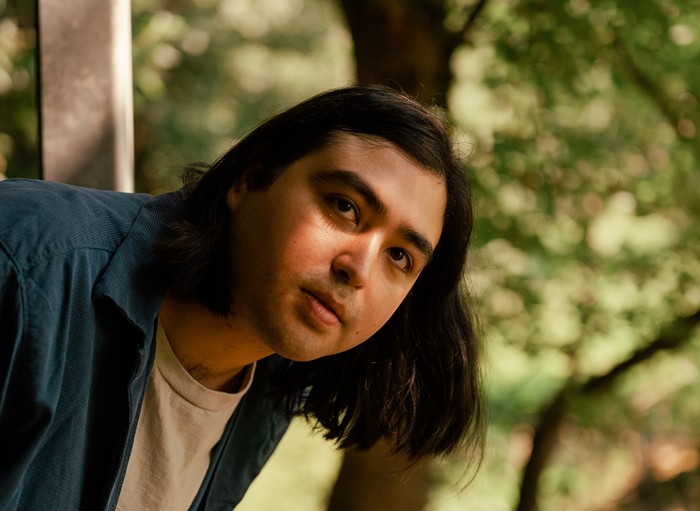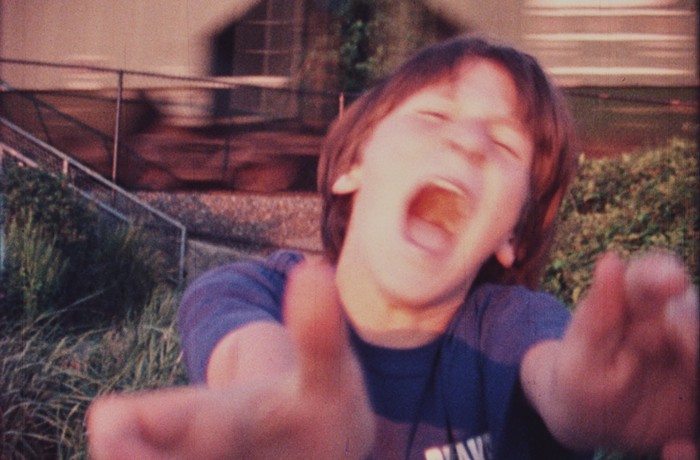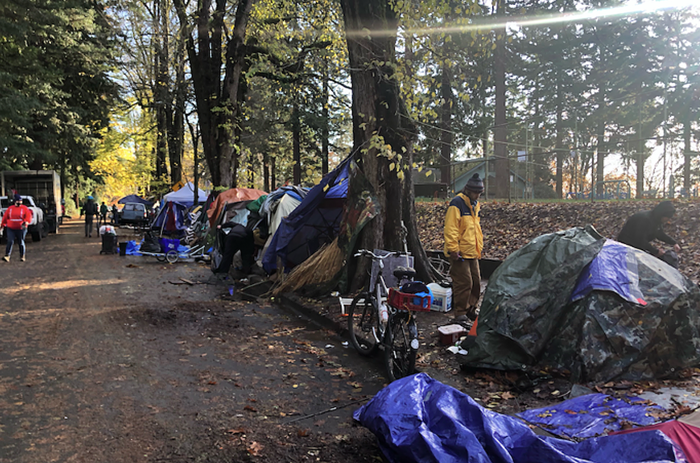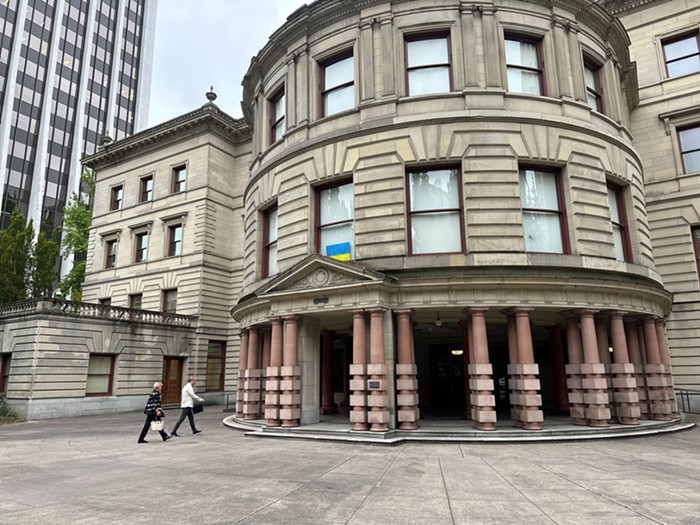"It's easy to see how the building has had many former lives," Phil Elverum says of Portland's iconic White Stag Building on a Tuesday in late March, pointing out some exposed brickwork in the midst of so much polished wood and brushed steel. "I'm always fascinated by the meek efforts of people to put a veneer on top of decay."
Elverum, the Anacortes, Washington-based songwriter who records a kind of haunted folk music as Mount Eerie, is in Portland for the second day of his week-long residency at White Stag to write and record a piece of music about the building, which he will perform there this Saturday, May 2. He shows me around the building's more remote passages, from an echo-drenched stairwell to a basement dead end that he speculates once led to the infamous Shanghai Tunnels. He's surveying the building for makeshift recording spaces and soaking up whatever history can be absorbed by simply dwelling in a structure.
"I keep thinking about how this is where Portland started," he continues. "This used to be a swamp until some dude parked his boat here. Now it's a fancy architecture building, but there are still echoes of the past that aren't especially well hidden."
Built in 1907, White Stag originally housed the Willamette Tent and Awning Company, and after being acquired by the University of Oregon in 2006 and undergoing an eco-friendly facelift, it now serves as the Portland campus for the school's Architecture and Allied Arts program. When writer Matthew Stadler, who leads public programming and the Publication Studio at White Stag, first conceived of the project, Elverum seemed a natural fit, given his work's preoccupation with place—specifically, Anacortes, as well as his namesake Mt. Erie, which lies just south of the town.
"Even when I'm on tour, I'm always trying to recreate this feeling [of my home]," he says. In fact, in 2004, Elverum shed his previous moniker, the Microphones, for Mount Eerie (adding an extra "e" to both his last name, formerly Elvrum, and the mountain's in the process). "I realized I was writing so much about a specific place that I finally said, 'Fuck it—I'll just embody it.'"
But the question remains: Is a mountain like a building? And can a songwriter who colors his fragile compositions with the primordial imagery of nature—wind, trees, water, sky, and, of course, the ever-present shadow of Mt. Erie—find similar inspiration from a manmade structure?
"I'm so used to my one way of doing things," he explains. "I'm definitely out of my comfort zone."
When he shows me the dorm-sized room where he'll spend his week, it's so stuffed with recording equipment and survival amenities—a Marshall amp tucked behind the door, a folded-up rollaway cot—that it's easy to imagine Elverum camped out in a different kind of wilderness altogether.
Two days later, I meet Elverum at Stumptown's downtown café for the opening of his first art show, In Dreams, an exhibition of landscapes he photographed in Norway, France, and rural Washington. Shot with antique cameras and expired film, the images don't document real places so much as map out some fictional realm that may only exist within the fantasies of the photographer or, as the exhibition's title implies, in the flickering cinema of the subconscious.
"So far, it's going really slow," he says, stepping away from the DJ station, where he's been spinning black metal and sweeping, new age synthesizer music. He tells me about a kind of origin myth he's working out, in which the building is a monumental gravestone, memorializing the death of a white stag that struggled and died in the swamp. As if to qualify such a fantastical interpretation, he adds, "I'm interested in the mythology, the poem version, rather than presenting an accurate story."
When I check in with Elverum on Saturday, the sixth day of his residency, he no longer seems mystified by the project; his reticence has evaporated. "It's done," he tells me by phone, his voice at once surprised and satisfied. He has finished scoring, so to speak, the White Stag Building with roughly 20 minutes of field recordings and actual songs. For the project's next phase, he'll return to Portland in a month and, alongside a group of graduate students, create a physical package for the recording in the University of Oregon's Publication Studio and perform his composition.
"It's not too specific or very informative, really," he explains. "The songs are about how hard it is to maintain a relationship with memory when something bad has happened. It's an extreme view, but that's essentially what happened: White men decided to build here and oppress native peoples and nearly destroyed the environment in the process. Living with a memory of darkness almost requires that it be repressed or else covered up with a thin veneer of wholesomeness. With all its brutal bricks and sustainable eco-wood, this building represents that."

